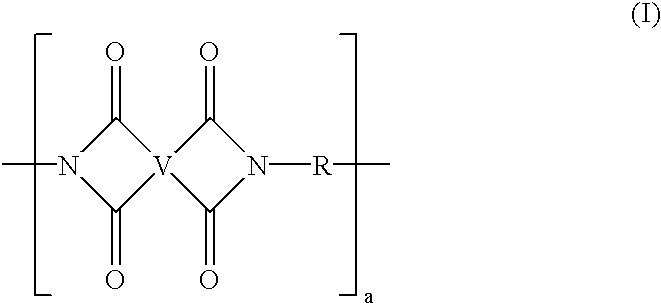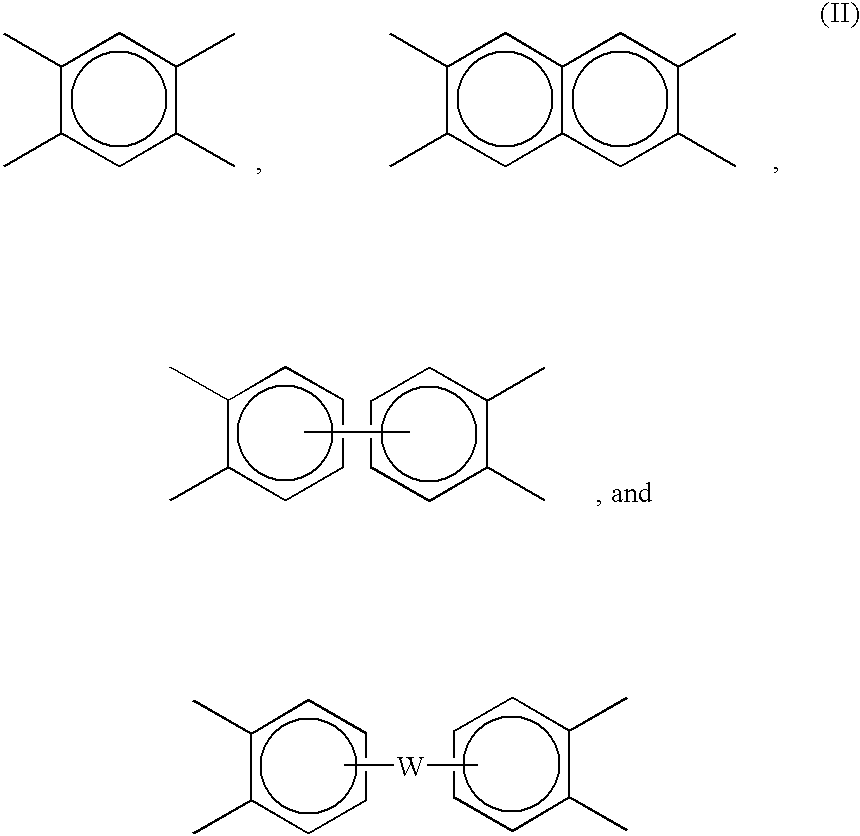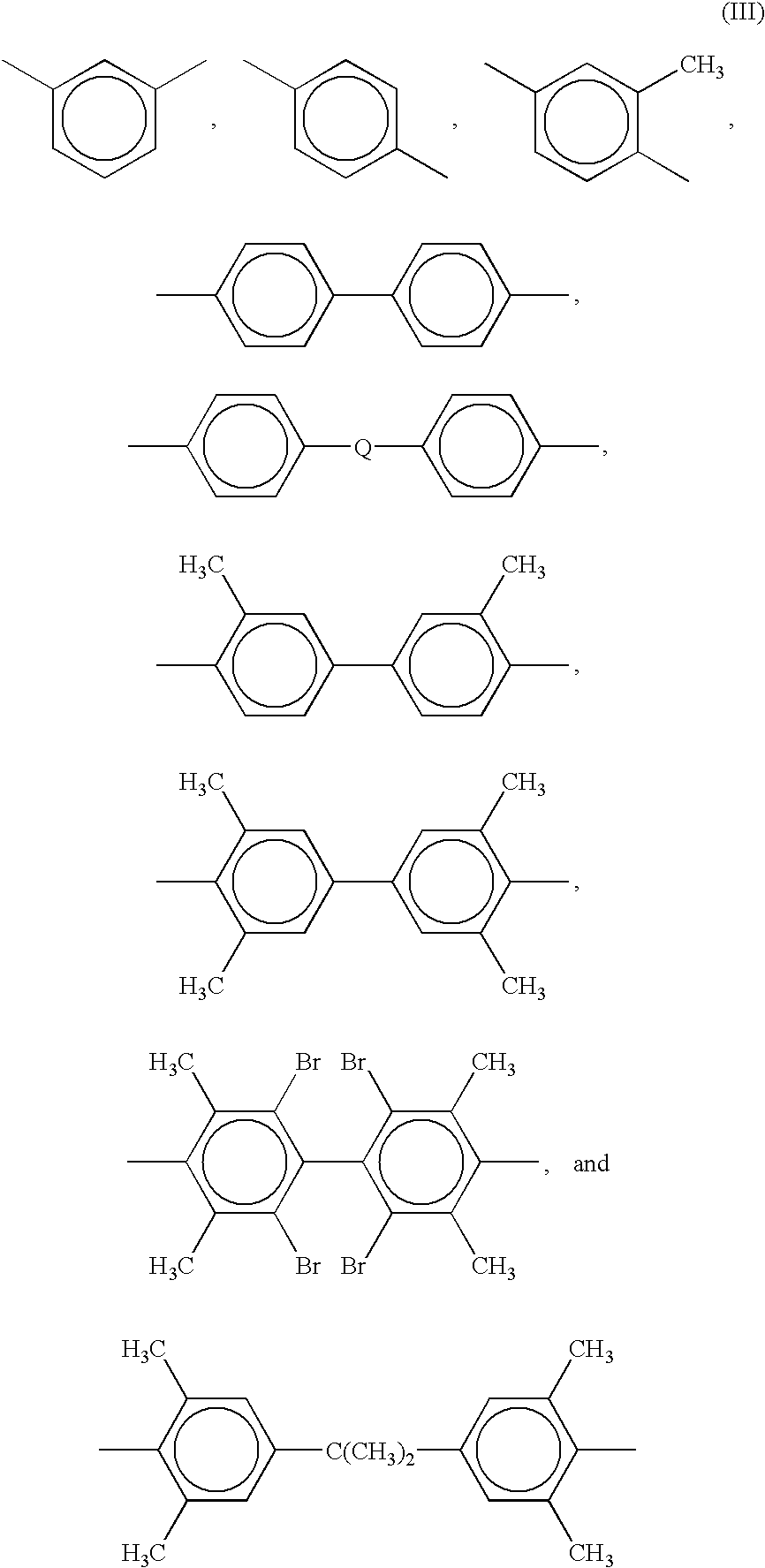Methods for embossing and embossed articles formed therby
a polymer surface and embossing technology, applied in the field of embossing of polymeric surfaces, can solve the problems of unsatisfactory head-disk interaction, inability to achieve nanometer-scale precision, and difficulty in embossing polymer surfaces having high glass transition temperatures, so as to improve the adhesion of the embossed polymer surface and improve the release of polymeric surfaces
- Summary
- Abstract
- Description
- Claims
- Application Information
AI Technical Summary
Benefits of technology
Problems solved by technology
Method used
Image
Examples
example 10
[0098] Pyralin 2611 a commercially available polyimide (from HD Microsystems) in polyamic acid form in NMP solvent was coated onto a glass substrate. The coated disk was then soft-baked at 150.degree. C. for 2 hours whereupon the disk was placed in an embossing press and embossed at 150.degree. C. with an optical disk stamper having a digital versatile disk (DVD) format. Following embossing, the disk was placed in an oven which was ramped from 150 to 300.degree. C. over 1 hour and held at 300.degree. C. for 1 hour to cure the polymer. Once baked the polymer possessed a glass transition temperature Tg2 of greater than 300.degree. C. and the pre-embossed pattern was maintained. In contrast, embossing of a pre-cured Pyralin 2611 polymer at 150 .degree. C. resulted in no pattern transfer.
[0099] The method of embossing described in the above embodiments provides several advantages that allow the production of improved embossed surfaces. Defects caused by thermal and chemical decompositio...
PUM
| Property | Measurement | Unit |
|---|---|---|
| Temperature | aaaaa | aaaaa |
| Temperature | aaaaa | aaaaa |
| Temperature | aaaaa | aaaaa |
Abstract
Description
Claims
Application Information
 Login to View More
Login to View More - R&D
- Intellectual Property
- Life Sciences
- Materials
- Tech Scout
- Unparalleled Data Quality
- Higher Quality Content
- 60% Fewer Hallucinations
Browse by: Latest US Patents, China's latest patents, Technical Efficacy Thesaurus, Application Domain, Technology Topic, Popular Technical Reports.
© 2025 PatSnap. All rights reserved.Legal|Privacy policy|Modern Slavery Act Transparency Statement|Sitemap|About US| Contact US: help@patsnap.com



